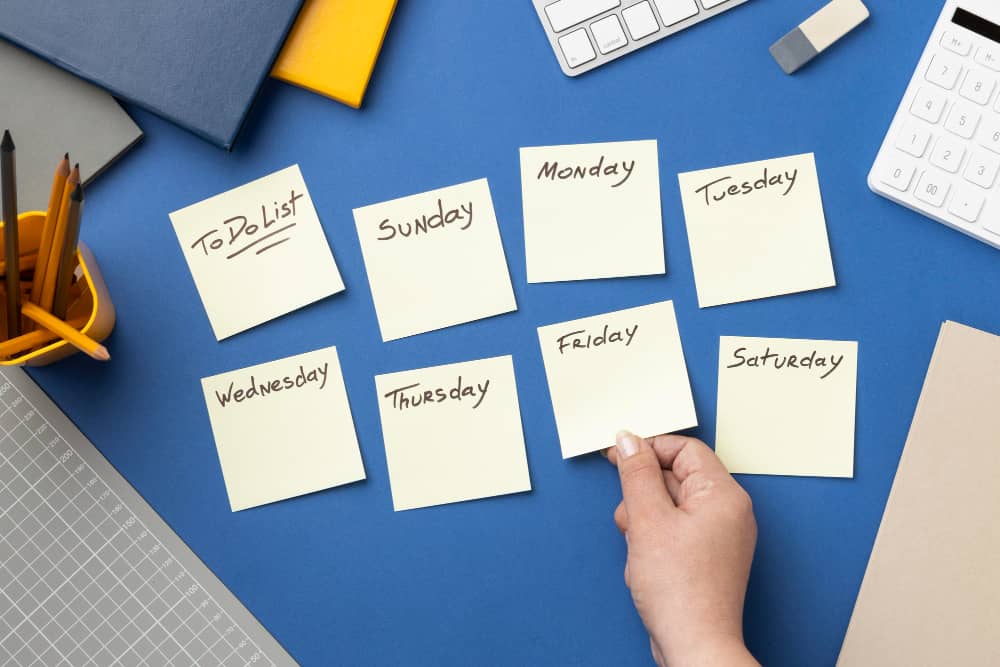Email marketing is an increasingly vital strategy for companies to interact with their customers. However, achieving success in it does not only involve writing great content or having an attractive subject line. The time of the campaign is a very important factor in success, and if you set it according to business day patterns, you will see a huge improvement in your work. There’s no escaping business day email marketing.
Understanding how business days affect email engagement allows marketers to make data-driven decisions, boosting open rates and clicks while avoiding common pitfalls.
What Are Business Days, and Why Are They Crucial for Email Marketing?
Business days – commonly Monday through Friday – form the backbone of professional routines worldwide.
The time of day when employees are working, socializing, and making decisions, defines the dynamics of the work environment. For marketers, understanding these daily patterns is essential, as they greatly influence consumer behavior and the effectiveness of their strategies. Marketers can tailor their approaches to align with when their target audience is most engaged, ultimately enhancing their impact and results.
How-To: Change a problem to an opportunity. You know that the flight length (FL) parameter is calculated based on the number of business days in a year, right?
The number of business days in a year helps you to plan strategic campaigns effectively by aligning them with your audience’s schedule.
The Role of Business Days in Email Engagement
According to various studies, the timing of your email campaigns could have a significant effect on the user’s interaction levels. The open rates, click-through rates, unsubscribe rates, and other email marketing metrics are variable even by the day and time you send your emails.
Here’s how business day patterns impact these metrics:
1. Midweek Opportunities:
- Tuesdays and Wednesdays might just be the best time to send emails. People are already familiar with their workweek and they seem to be more likely to respond to your email campaign.
- Emails sent during these days often have higher open and click rates compared to others.
2. Avoiding the Monday Rush:
- Mondays are typically overloaded with meetings and tasks. Emails sent on this day are more likely to be ignored or deleted due to inbox clutter.
3. Fridays and the Weekend Challenge:
- In many cases, Fridays might see a reduction in activity as professional people are already looking forward to their weekends. Those emails that are delivered on Friday evenings would possibly be disregarded until Monday, and much more time will be lost after that.
Through observing these patterns, you will be able to plan your campaigns to occur when people are on the web the most, and hence you will have the best chances of having your emails read.
Key Factors to Consider When Scheduling Email Campaigns
To effectively align your campaigns with business day patterns, here are a few critical considerations:
1. Audience Segmentation
- Not all audiences follow the same business day schedules. For example, some regions observe different weekends (e.g., Friday-Saturday in the Middle East). Use segmentation to divide your audience by location and send emails that align with their local business days.
2. Time Zones Matter
- Sending an email at 9 AM may work well for one region but could land in the middle of the night for another. Use tools or scheduling strategies to optimize delivery based on your audience’s time zones.
3. Testing and Analyzing
- Consistently try out sending your campaigns on various days and at various times to establish the most popular time for the subscribers. A/B testing various email sending times may help you figure out when your emails show the best results.

4. Avoiding Oversaturation
Balance your campaigns so that you do not lose the attention of your audience while not being too overwhelming for them to deal with.
How to Align Your Email Marketing Strategy with Business Days
Being aware of the significance of business days is one matter; working it through your email marketing strategy is another. Below is a short guide that outlines the steps to schedule and coordinate email marketing campaigns effectively for business days.
Step 1: Identify Key Business Days
- Analyze your industry and target audience to identify the most impactful days for engagement. Pay attention to trends specific to your market, as they may differ from those in other markets. To do this, look for statistics and research relevant to your particular market rather than relying on general statistics.
Step 2: Leverage Early Workday Hours
- Emails sent earlier in the day (for instance, between 9–11 AM) usually work more effectively. It is during this period that the vast majority of professionals access their inboxes while they are initiating their daily operations. Test sending schedules across different time zones if you have a global audience to ensure optimal delivery.
Step 3: Use Data to Refine Timing
- Study email metrics such as open rates and click-through rates. Use this data to refine your email timing and improve campaign results. Monitor patterns over weeks and months to see which days and times consistently yield the best results.
Step 4: Plan Around Holidays and Events
- Keep an eye on public holidays and major industry events that might disrupt business day patterns. Adjust your schedules accordingly to maintain relevance. Use holiday campaigns to your advantage—send themed emails before major holidays like Christmas or Black Friday. Be mindful of quieter periods, such as long weekends, when audiences might be less engaged.
Examples of Business Day Scheduling in Action
Marketers who have mastered business day scheduling often see dramatic improvements in their campaign performance.
Consider these scenarios:
- Shifting email campaigns from Mondays to Wednesdays led to a 20% increase in engagement by a B2B software company.
- By delivering discount offers on Thursday afternoons, e-commerce retailer managed to sell more over the weekend, as customers had the time to think over what to buy and manage their budgets.
- A travel agency noticed that sending promotional emails on Tuesday mornings, when people are back to work and planning their week, resulted in a 15% rise in bookings compared to Friday sends.
- Hosting flash sales on Sunday evenings aligned with retail brand customers’ weekend shopping habits, leading to a 30% boost in sales during those hours.
- A restaurant chain implemented a strategy of sending out loyalty rewards emails on Friday afternoons, capitalizing on customers’ plans for dining out, resulting in a significant uptick in foot traffic over the weekends.
- A financial services company discovered that webinars scheduled for Wednesday lunch hours enjoyed higher attendance rates, leading to increased leads and conversions, as potential clients were more available during that time.
- Marketers of a fitness app saw increased user engagement by promoting challenges on Monday mornings, inspiring users to set new goals for the week ahead.
These examples illustrate the profound impact that strategic timing and scheduling can have on marketing effectiveness, allowing businesses to connect with their audiences when they are most receptive.
Common Pitfalls to Avoid in Business Day Email Marketing
When aligning your email campaigns with business day schedules, steer clear of these common mistakes:
- Ignoring Data:
- Skipping the analysis of email metrics can result in missed opportunities to optimize timing.
- Overlooking Audience Diversity:
- Failing to consider regional differences in business days and work hours and assuming that the exact timing works for all industries and demographics can lead to ineffective campaigns.
- Sending Late on Fridays:
- Emails sent on Fridays after hours often get forgotten among piles of unread emails by Monday.

Maintaining Consistency for Long-Term Success
Consistency is the key to leveraging business day scheduling effectively.
Here’s how you can maintain it:
- Create an Annual Campaign Calendar:
- Plan your campaigns around key dates and business days throughout the year.
- Monitor Trends:
- Stay updated on changes in email engagement trends and adjust your strategy accordingly.
- Engage with Feedback:
- Pay attention to what your readers tell you and improve your scheduling practices as they demand.
Conclusion: Mastering Business Day Email Marketing
Time has always been the most powerful lever in email marketing. Knowing how the business day scheduling influences the engagement and performance of your business can make you well-prepared and, thus, ahead of your rivals.
The right schedule for your campaigns can encourage the audience to interact more, resulting in higher open rates and overall success. By aligning your email strategy with business day email marketing principles, you can build a stronger connection with your audience and increase the likelihood of achieving long-term success.
